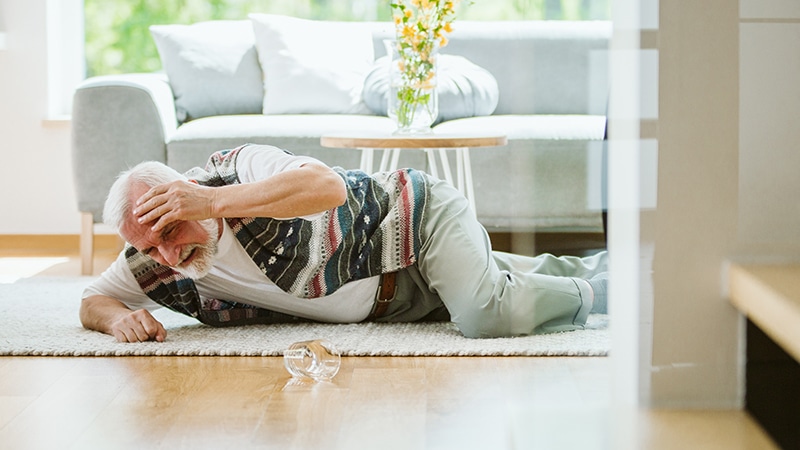Why do the elderly not often recover from falls? – 5 factors, with suggested solutions
Falls among the elderly population have become a significant public health concern in recent years. According to statistics, falls are the leading cause of fatal and non-fatal injuries in older adults.
Sadly, many older adults who experience a fall do not fully recover, facing physical, emotional, and social consequences that can significantly impact their overall well-being.
In this article, we look at 5 factors that contribute to why the elderly often struggle to recover from falls and explore potential strategies to address these issues.

1. Physical impact of falls
As individuals age, the body undergoes various changes that increase the risk of falls and hinder recovery.
Reduced muscle strength, diminished balance, and a decline in bone density are common age-related factors contributing to the severity of injuries sustained during falls.
Fractures, particularly of the hip and spine, are a common outcome of falls and can be debilitating, leading to prolonged recovery periods.
2. Chronic health conditions
The presence of chronic health conditions is another significant factor that influences the recovery process after a fall.
Conditions such as osteoarthritis, Parkinson’s disease, and cardiovascular diseases can impair mobility and coordination, making it more challenging for the elderly to regain independence following a fall.
Additionally, the use of multiple medications to manage these conditions can have side effects that increase the risk of falls and complicate the recovery process.
3. Delayed response times to falls
Timely medical intervention plays a crucial role in ensuring a successful recovery from falls.
However, due to various factors, such as the current pressure on the emergency services, fear of reporting the fall, lack of awareness, or limited access to healthcare, many elderly individuals do not receive immediate medical attention.
Delayed diagnosis and treatment can result in ‘long lies’, which in turn can result in prolonged recovery periods and an increased risk of complications and recurrent falls.
Related article: What Is A Long Lie Fall? Causes, Impact, and Prevention
4. Psychological impact of falls
Falls can have a profound psychological impact on older adults, leading to decreased self-confidence and fear of falling again.
This fear often leads to reduced physical activity and increased sedentary behaviour, further increasing muscle weakness and loss of mobility.
The psychological consequences can also contribute to social isolation and depression, impeding the overall recovery process.
5. Environmental hazards
The physical environment in which older adults reside plays a significant role in preventing falls and promoting recovery.
Environmental hazards, such as poor lighting, slippery floors, uneven surfaces, and lack of grab bars, increase the risk of falls and can hinder the recovery process.
Modifying the living space to make it safer and more accessible can significantly reduce the likelihood of falls and improve recovery outcomes.
Strategies for Improving Recovery:
While the challenges faced by the elderly in recovering from falls are complex, several strategies can help improve outcomes:
- Fall prevention programs: Implementing evidence-based fall prevention programs that focus on strength and balance training can help reduce the risk of falls and improve the overall resilience of older adults.
- Comprehensive assessment after falling: Conducting thorough assessments to identify underlying health conditions, medication-related issues, and environmental hazards can aid in tailored interventions and promote a more effective recovery process.
- Rehabilitation programs: Collaborative efforts involving healthcare professionals such as physiotherapists, occupational therapists, and social workers can optimize the recovery process by addressing physical, emotional, and social aspects of falls among the elderly.
- Improving response times to falls: Implementing processes and appropriate equipment such as the Raizer lifting chairs to enable a fast response to falls will increase confidence in vulnerable older adults and improve the outcomes of any further falls.
- Home modifications: Modifying the living environment to make it safer and more accessible, including installing grab bars, improving lighting, and removing tripping hazards, can reduce the likelihood of falls and support recovery efforts.
Summary
Recovering from falls can be particularly challenging for the elderly due to a number of factors which we’ve covered in this article.
Understanding these factors is crucial in developing effective strategies to prevent falls and improve recovery outcomes.
By implementing comprehensive falls prevention programs, providing rehabilitation, and improving response times to falls, we can enhance the quality of life for older adults, promote their independence, and reduce the impact of falls on their overall well-being.
Related articles
Where Do Falls Occur The Most?
What Are The Consequences Of Falls In The Elderly?
What Causes Falls in the Elderly?
Get in touch
Got a question or want to send us a message? Let’s talk.